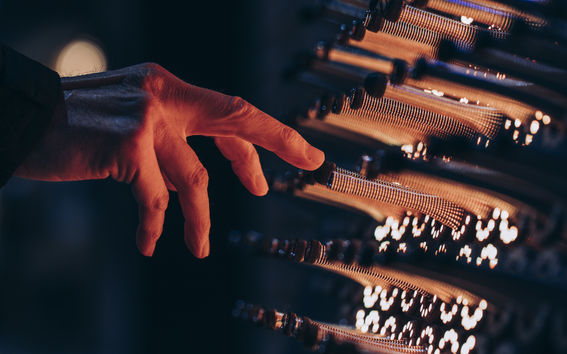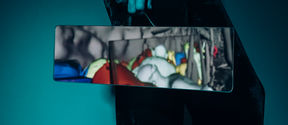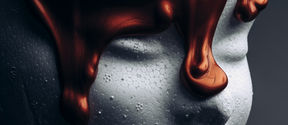Quantum Garden uses sculpture to get the public to train AI

Sat in the entrance of Aalto University metro station on the outskirts of Helsinki, Quantum Garden is a sculpture designed to draw the viewer in to play with it. Big rubber stoppers on shiny brass springs are backlit by dancing LED lights, tempting passers-by to pause, look, and give the springs a flick. Playing with the springs causes the lights to snap into new patterns and colors, with the different patterns depending on how the visitor hit the springs. Before long the whole of Quantum Garden is awash with dancing light and a thoroughly satisfyingly mechanical twanging noise of the wobbling springs.
Quantum Garden entices commuters to have a bit of fun on their journeys to and from work, but at the same time the sculpture gathers data sequences to help solve a quantum computing problem. The springs are wired up to computers that measure how the user interacts with the sculpture and turns these interactions into numbers, and these numbers are then fed into a computer model of a quantum computing problem.
Quantum computing itself is an exciting near-future technology and it has many advantages over current computers. It can solve problems in parallel, which will mean it can be used for simulating complex systems such a chemical reactions and drug interactions that we can’t possibly achieve with current machines. There is an ironic problem, however, that some of the calculations we need to solve to be able to build quantum computers are extremely difficult to solve without a quantum computer
The Quantum Gardensculpture hopes to come up to an answer to one of these problems.The issue in question is how to move atoms containing quantum computing information quickly and effectively. So far, it’s not been possible to calculate the most efficient methods using mathematics alone, but a computer simulation of the problem exists. The scientists on the project are training an AI to carry out the simulation many times to find the optimal way to do it, but first they need example data to train the AI on.
This is where Quantum Garden comes in. By playing with the springs, passers-by have generated thousands of inputs for the simulation, and the AI can analyze these to work out how best to approach finding the optimal solution for the problem.
‘The average 21 year old in the US has spent over 10 000 hours playing video games — the equivalent of working in a full-time job of 40 hours per week for 5 years. We want to be able to channel that enormous amount of human brainpower by designing games that have a purpose. By playing Quantum Garden everyone can be part of the Quantum Computing revolution and help us building the quantum computer!’ says Prof Sabrina Maniscalco (Aalto University and University of Turku).
The Quantum Garden will be part of the Lux Helsinki art challenge, and will be at Jeff Bezos’s MARS conference in Palm Springs 2019.
More from this series

Making computer-generated images look just right
Machine learning imperfections in materials
Rewiring art education
Käsityökoulu Robotti is an extra-curricular school for kids that is as much about having fun bending circuits as about learning by breaking boundaries.
Quantum Garden uses sculpture to get the public to train AI
The sculpture gathers data sequences to help solve a quantum computing problem.
AI’s story won’t be complete without art
Aalto’s Kasperi Mäki-Reinikka wants art and technology to collide and make something newRead more news

Your voice gives away valuable personal information, so how do you keep that data safe?
With speech technologies becoming increasingly common, researchers want to make sure we don’t give away more information than we mean to.
Aalto in 2025: Quantum leaps, creative breakthroughs and solutions for a better life
Growth, technology and industrial renewal; human-centred solutions; health and everyday wellbeing; and enjoyable daily life and thriving communities.
Research Council of Finland establishes a Center of Excellence in Quantum Materials
The Centre, called QMAT, creates new materials to power the quantum technology of coming decades.






